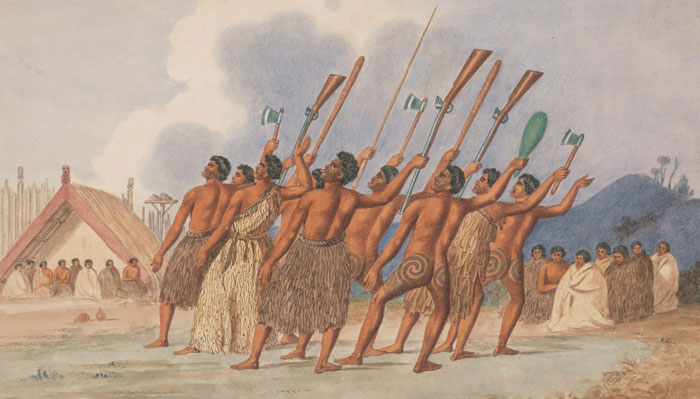Subject: ariki / rangatira warrior chief
Culture: Maori
Setting: Musket Wars, Aotearoa / North Island 1807-1830
American Museum of Natural History > Mead Hall of Pacific Peoples *
* Kimbell Art Museum
"New Zealand, Maori culture, possibly Rongowhakaata people, Te Huringa period I, 1800-present Standing Ancestor Figure c. 1800-1840 Wood ...
The Maori tribes of New Zealand excelled in the decoration of their timber buildings with elaborate relief carvings and sculptures. This powerfully conceived, freestanding figure may have functioned as a tekoteko, a carved figure placed on the gable peak of an assembly house, food storehouse, or chief's dwelling; or it may have been a poutokomanawa, the center post that holds up the ridgepole of a large house such as that of a chieftain. The ridgepole is symbolically the backbone of the ancestor who is represented by the house. The figure represents either a god or a recently deceased male ancestor who, in Maori culture, looks after the welfare of his descendants.
* Brooklyn Museum > Oceania
"Gable Figure (Tekoteko) Maori people; New Zealand, North Island, East Coast, circa 1850-60 Wood, shell, and pigment ...
Placed above a gable mask, this tattooed ancestor figure would have been the highest element of the façade."
* Metropolitan Museum of Art > Oceania
"Gable Figure (Tekoteko) Maori people, Te Arawa Region, Aotearoa (New Zealand), 1820s Wood, paint ...
Ancestors (tupuna) play a central role in Maori art and culture. The majority of human images (tiki) in Maori art portray ancestors, and some of the finest ancestor images were, and are, created as architectural ornaments. This imposing tiki is a tekoteko (gable ornament), which once adorned the roof peak of a storehouse (pataka), belonging to the village chief and used to safeguard food, tools, weapons, and other items.

